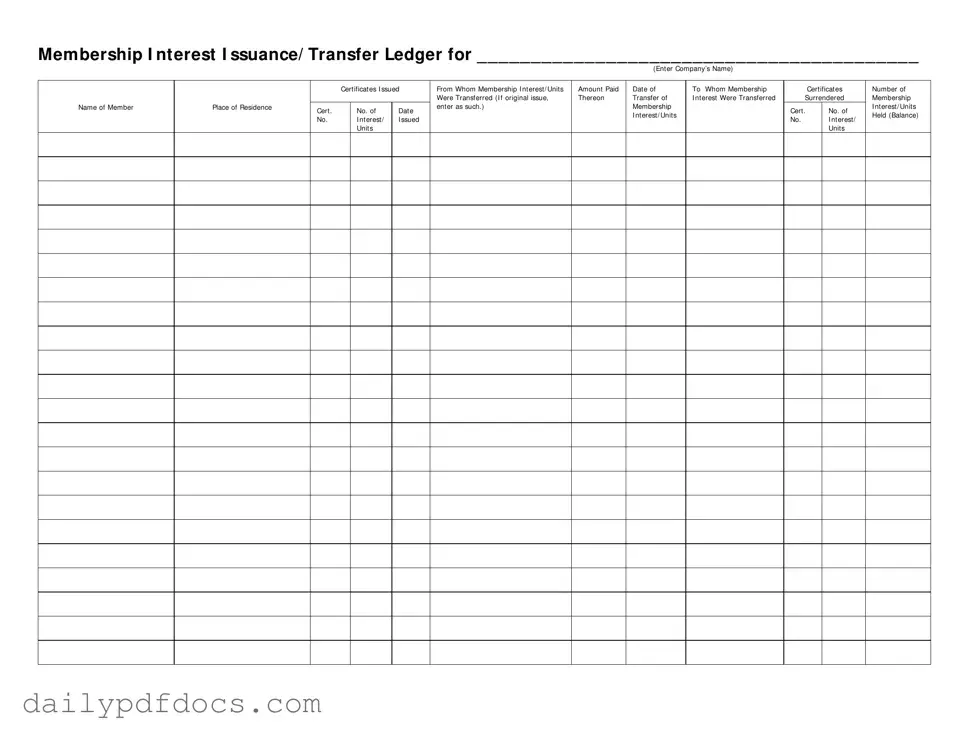What is the purpose of the Membership Ledger form?
The Membership Ledger form serves as a record-keeping tool for tracking the issuance and transfer of membership interests or units within a company. It helps ensure that all transactions related to membership interests are documented accurately. This form provides essential information about who holds membership interests, the amounts involved, and any changes in ownership over time.
How do I fill out the Membership Ledger form?
To complete the Membership Ledger form, start by entering the company’s name at the top. Next, fill in the details for each transaction, including the name of the member, the amount paid, and the date of the transaction. If you are recording a transfer, indicate the name of the person to whom the membership interest is being transferred. Be sure to include the certificate numbers for both the original and transferred interests, as well as the number of units held after the transaction.
What information is required for each entry in the ledger?
Each entry in the Membership Ledger should include the name of the member, the amount paid for the membership interest, the date of the transaction, and the name of the person receiving the interest if it is a transfer. Additionally, you will need to provide the certificate number associated with the membership interest and the number of units involved. This comprehensive information ensures clarity and accuracy in tracking membership interests.
Can I make corrections to the Membership Ledger form?
Yes, corrections can be made to the Membership Ledger form. If you need to amend any information, it’s best to draw a single line through the incorrect entry and write the correct information next to it. Make sure to initial the correction and include the date. This practice maintains the integrity of the record while providing clear documentation of any changes.
Who is responsible for maintaining the Membership Ledger?
The responsibility for maintaining the Membership Ledger typically falls to the company’s designated secretary or administrative officer. This individual ensures that all entries are made accurately and in a timely manner. However, it is a collaborative effort, and all members involved in transactions should provide the necessary information to keep the ledger up to date.
How often should the Membership Ledger be updated?
The Membership Ledger should be updated promptly after any transaction involving membership interests occurs. This could be after a new issuance or a transfer of interests. Keeping the ledger current helps maintain an accurate record of membership ownership and ensures compliance with any regulatory requirements.
What should I do if I lose a Membership Certificate?
If a Membership Certificate is lost, it’s important to report the loss to the company immediately. The company may require you to complete a lost certificate affidavit or similar documentation. Once verified, a replacement certificate can be issued. It’s crucial to keep the Membership Ledger updated with the details of the lost certificate and the issuance of the new one.

